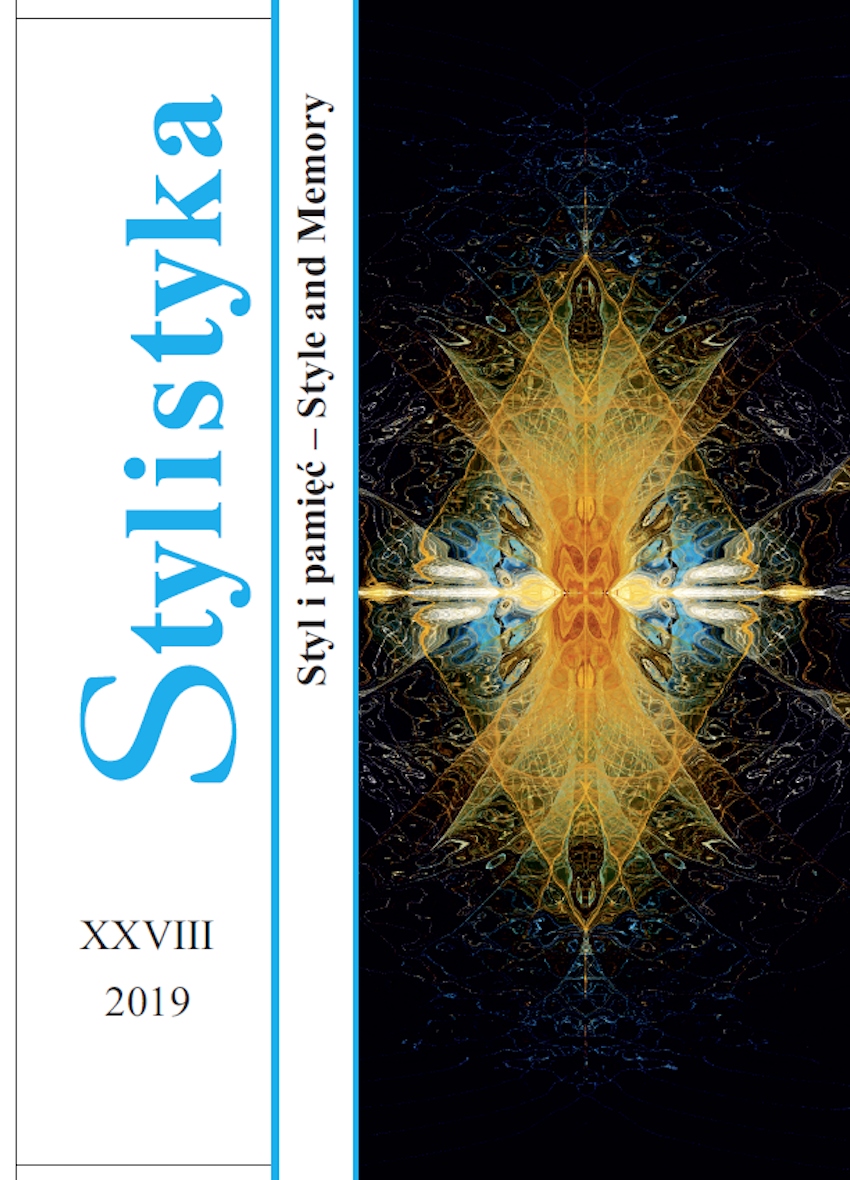Репрезентанты концепта память в свете новых задач стилистики
Representatives of the concept MEMORY in view of new stylistics’ tasks
Author(s): Ol'ga V. YevtushenkoSubject(s): Language and Literature Studies
Published by: Uniwersytet Opolski
Keywords: style; memory; genre-memory; types of thinking; communication context; choice of language means
Summary/Abstract: Starting with the definition of style by K.A. Dolinin, the article proposes to reflect on the perspectives of an interdisciplinary approach to stylistic research, using primarily the achievements of psychology and philosophy, as the style of a literary work is the result of the subject’s choices, which in turn result from his/her individual way of thinking. The interdisciplinary approach will also allow for more effective aesthetic assessment of the work. The article analyses three literary texts based on memories: The childhood years of Bagrov-grandson, serving as a continuation of the Family Chronicle by S.T. Aksakov, The Life of Arsenyev by I.A. Bunin and Be Like Children by V.A. Sharov. On the example of language constructions forming the concept of MEMORY, the researcher shows the factors that influence the choice of language means that ultimately create the individual style of the author. The study proves that this choice is influenced by non-linguistic factors: the situational context, era, the author’s professional and personal experience and education, philosophicaland aesthetic ideas, and other important circumstances that guide the artist’s thinking. Genre rules and current tastes are also of importance. The study shows that the ratio of the number of language constructions regarding experience memory and information memory can characterize the individual style of a given author. It also proves that a broader interdisciplinary view of style allows to see more determinants of the aesthetic value of a work. Among them are: the harmonious structure of the text including its spatial and temporal organization, and the compliance with the broadly understood norm that involves not only the linguistic but also the mental layer of the text, as expressed by appropriately selected means.
Journal: Stylistyka
- Issue Year: 2019
- Issue No: XXVIII
- Page Range: 25-40
- Page Count: 16
- Language: Russian

